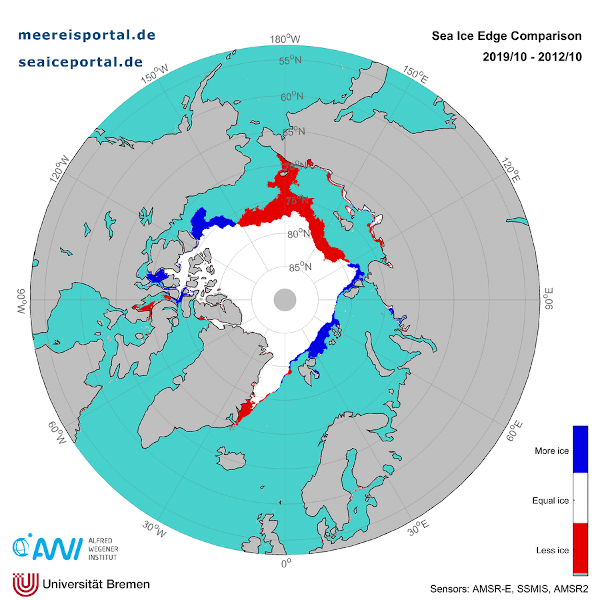According to scientists, as reported on the AWI website, the sea-ice growth in the Arctic is at a historical low. The mean sea-ice extent in the Arctic this October was only 5.44 million km2, which is more than 443,000 km2 below the previous minimum year, 2012 noted by analyses from the University of Bremen´s Institute of Environmental Physics.

In comparison the area is the size of Morocco or 1.24 x the size of Germany. “As Christian Haas, Head of the Sea Ice Division at the Alfred Wegener Institute, explains: “Since the beginning of continuous sea-ice observation, we’ve never seen so little sea ice in the Arctic at this time of year. It’s a troubling process, most likely caused by the increased heat input from the ocean and the atmospheric circulation in the Arctic.”
An important indicator for the effects of climate change in the polar regions is the sea-ice extent in the Arctic. The sea-ice is manifesting a negative climatological trend that reflects the increasing warming of the Arctic. The October sea-ice extent reached its lowest extent this year declining by ca. 34% since the beginning of continuous satellite. Especially in the northern Canada Basin, in the Chukchi, Siberian and into the Laptev Sea, there was considerably less ice than in the comparison year 2012, the year with the lowest summertime sea-ice extent to date.
The full article can be read here.
Figure: Difference in mean ice margin position in October 2019 compared to the mean value for October 2012. Regions marked in blue have more sea ice than the reference period; those marked in red have less
Source:AWI
